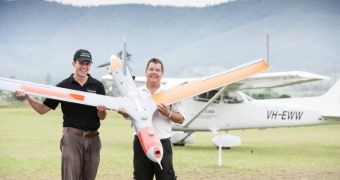UAVs are really useful tools for aerial reconnaissance, among other things, but they have had one big problem for a long time: lack of ability to independently respond to situations like, say, incoming collisions with other aircraft.
This is no longer the case, though. A test was carried out recently by the Queensland University of Technology's Australian Research Centre for Aerospace Automation (ARCAA).
The test, part of Queensland Government's Project ResQu, consisted of a Scan Eagle unmanned aerial vehicle visually identifying the approach of a Cessna airplane.
Queensland University collaborated with Boeing Research & Technology – Australia, and Scan Eagle manufacturer Insitu Pacific.
The UAV managed to do what it did thanks to a vision-based sense and avoid technology, which has already been implemented in manned aircraft as a backup for human pilots.
The UAV didn't make the evasive maneuver on its own – it still needed its remote operator to steer it out of the way – but it did make the identification properly, and with time to spare.
This should open new doors for UAVs in the future. While they may still be a security risk in hostile scouting (since no one wants their inventions captured and dissected by the enemy), they could be of much help in non-military applications.
For example, they could help in disaster management, environmental pursuits, search and rescue, etc.
"Ultimately, this will allow UA [unmanned aircraft] to provide public services such as assistance in disaster management and recovery, as well as in environmental, biosecurity and resource management," said ARCAA Director Prof. Duncan Campbell.
Future UAVs should be able to avoid mid-air collisions unassisted. Since artificial intelligence and processing technologies are evolving so very quickly these days, the breakthrough may come faster than some would think. Maybe in a couple of months or so.

 14 DAY TRIAL //
14 DAY TRIAL //